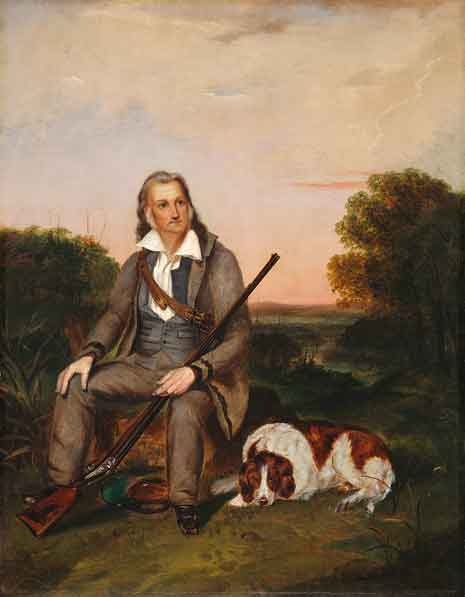The Death of John James Audubon: January 27, 1851

He killed thousands of birds and cruelly experimented on many animals, including catfish, a bald eagle, and his very own hunting dog. With friends, he buried a rat in a pot, its tail protruding from the dirt, and gave the complete ensemble to another friend, claiming it was a rare flower. He served jail time for bankruptcy and knifed a man in Kentucky over ownership of a steamboat.
Today, his drawings and paintings of American wildlife are respected worldwide, and his name is synonymous with environmental concern and wildlife preservation. A true enigma, John James Audubon was not even his name until he came to America in 1803 to look after his father’s business.
Audubon, born Jean Rabin in Saint-Domingue in 1785, was something of a liar from the beginning; he told others falsely and often that he studied painting with Jacques-Louis David. Artistically and professionally, Audubon struggled to gain acceptance into the strict company of American and British scientific academies.
Although Audubon’s technique of moving nature from the outdoors to the canvas was well within the realm of the acceptable in the early nineteenth century, today his process would be anathema to the society that now bears his name.
According to Audubon biographer William Souder, “At one time or another, Audubon killed specimens of all but a handful of the more than four hundred species of birds he ultimately painted, plus most of the quadrupeds of North America, from squirrels to alligators to moose.”
Simple enough to describe, his process was to kill, clean, position, and paint. One difference, however, between Audubon and his contemporary, Alexander Wilson, is that Audubon portrayed his ornithological subject matter at life size.
A second difference is that Audubon posed his birds in nature, conducting activities that he had either imagined or witnessed. For example, his Black Vulture appears to be eating the flesh of a deer carcass, while his female Great Cormorant is portrayed tending her young through tall grass.
With the exception of the display of birds in the Peale Museum in Philadelphia, wildlife work for the scientific community was usually posed and drawn on a small scale and without the aesthetic benefit of habitat, weather, and fauna in the forms of prey or predator.
By 1823, Audubon was living in Louisiana, drawing and teaching, having amassed great debt but also having assembled a vast portfolio of American wildlife art. When he arrived in Philadelphia in 1824, he hoped his art would receive acclaim, but his work was received poorly by the Academy of Natural Sciences and George Ord, a friend of the late Alexander Wilson. As Souder states, “Against Ord’s energetic opposition to him throughout the city and the orchestrated campaign to prevent his election to the academy, Audubon never had a chance.”
His work was well received throughout Britain, however. The Scots elected him to the elite scientific Wernerian Society in 1827, and he was elected to the Royal Society in London in 1830.
These successes coincided with the publication of Audubon’s most lasting achievement—what he called his “great work,” The Birds of America, containing 435 hand-colored images and distributed in 87 parts. A stunning achievement, also recognized in the United States, the publication of The Birds of America eventually propelled Audubon into the ranks of the Academy of Natural Sciences in 1831, seven years after his initial rejection.
Audubon spent most of his last decade in New York, having succumbed to various illnesses, and died there on January 27, 1851. He is buried in Trinity Church Cemetery at 155th Street and Broadway in Manhattan.
—Warren Perry, Catalog of American Portraits, National Portrait Gallery
Cited:
William Souder, Under a Wild Sky: John James Audubon and the Making of “The Birds of America (New York: North Point Press, 2004).